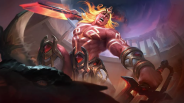Google is celebrating the 182nd birthday of the Russian chemist, Dmitri Mendeleev, who created the Periodic Table of Elements, which is memorized by students and chemists the world over.
The so-called “Father of the Periodic Table” had said that the idea of setting down the elements in a logical chart came to him in a dream.
During Mendeleev's time, there were 56 known elements and he was able to show how they related to each other in a distinct pattern. According to Google's description of the doodle which honors him, “his periodic table let elements fall into 'periods' according to atomic mass and valence (the power that determines how they combine).”
Mendeleev also made room on his table of elements to account for yet-to-be discovered elements based on his predictions. Although some of his predictions turned out to be wrong, his table now logically lists all 118 currently identified elements, including the most recent additions: ununtrium (Uut), ununpentium (Uup), ununseptium (Uus) and ununoctium (Uuo).
The final artwork for the Google Doodle was created by artist Robinson Wood in an artistic representation of Mendeleev putting in the final building blocks for his table.
Mendeleev was born on Feb. 8, 1834 in Tobolsk, Siberia in Russia. He went to school in St. Petersburg and graduated in 1856. He was appointed to a professorship and was considered one of the greastest teachers during his time in 1863 and succeeded to the Chair in the University just three years later until he resigned in 1890. He passed away in 1907 of influenza at the age of 72.
In addition to today's Google Doodle for his birthday, he has also been immortalized by having a crater on the moon named after him as well as element 101, the radioactive synthetic element, mendelevium (Md).
Meanwhile, some countries are displaying a different Google Doodle to commemorate Chinese New Year with monkeys spelling out the search engine's name to ring in the year of the Monkey.
ⓒ 2025 TECHTIMES.com All rights reserved. Do not reproduce without permission.
![Best Gaming Mouse For Gamers With Smaller Hands [2025]](https://d.techtimes.com/en/full/461466/best-gaming-mouse-gamers-smaller-hands-2025.png?w=184&h=103&f=6fd057ef777bd39251d4e7e82e9b23f1)



![Best iPads that Students Can Use in School [2025]](https://d.techtimes.com/en/full/461431/best-ipads-that-students-can-use-school-2025.jpg?w=184&h=103&f=516289300e12e9647ef3d5bd69f49b70)